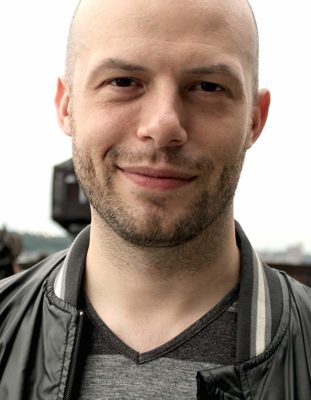 Name: Ted Geoghegan
Name: Ted Geoghegan
Age: 39
Birth Place: Beaverton, Oregon
Sexuality: Bi
Notable films: We Are Still Here (2015), Mohawk (2017) [Read more…]
The curated portfolio of film journalist Joe Lipsett
by Joe Lipsett
 Name: Ted Geoghegan
Name: Ted Geoghegan
Age: 39
Birth Place: Beaverton, Oregon
Sexuality: Bi
Notable films: We Are Still Here (2015), Mohawk (2017) [Read more…]
by Joe Lipsett
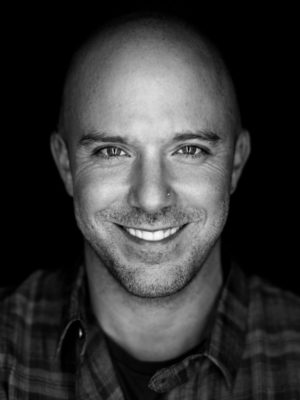 Name: Carter Smith
Name: Carter Smith
Age: 47
Birth Place: Bowdoinham, Maine
Sexuality: Gay
Notable films: Bugcrush (2006), The Ruins (2008), Jamie Marks Is Dead (2014) [Read more…]
by Joe Lipsett
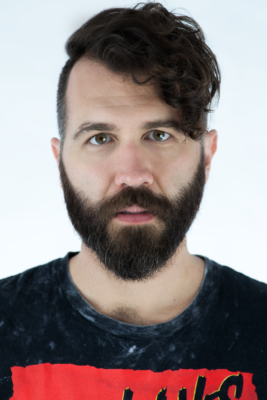
Name: Sam Wineman
Age: 34
Birth Place: Pennsylvania
Sexuality: Queer
Notable films: Wrote/directed The Quiet Room (2018), “Milk and Cookies” segment in Deathcember (2019), 2nd Unit Director on Satanic Panic (2019)
When did you know you were queer? When did you come out?
Sam Wineman: I got sober very young and on the other side of that was a bit of clarity; I came out a few weeks later. I was 17. But long before I was even aware, my queerness was expressing itself in my tastes and informing my choices. My friends wanted to be Han Solo, but I knew I was Sidney Prescott. I saw myself in the final girls.
It feels like you’ve only been making shorts for a hot minute, but you’re on the cusp of exploding with a few high profile projects. How did you get into filmmaking?
SW: A broken heart and a road trip.
After a long-term relationship dissolved, I decided to date my way through 12 cities in 12 days and turn the experience into a podcast. A friend of mine said, “If I get us a camera, can I come on the trip and film it?” I had been writing for quite some time, but that was my first experience directing. To say that I loved it is an understatement. Directing combined so many of my passions: storytelling, leading music – all in the name of creating queer art.
So I thought, what if I could do that with horror? And when I got to film school, that’s exactly what I did. I used each exercise to practice not only filmmaking, but the art of constructing a scare.
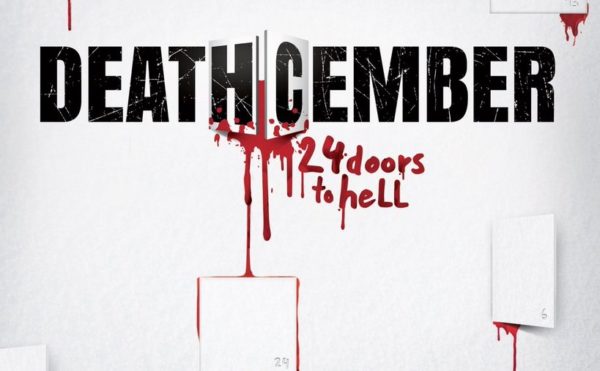
As a horror creator, what is it about horror that attracts you?
SW: I am drawn to the fight. I love stories about people who come face to face with the impossible. Often, a character’s survival depends on their ability to embrace the very aspects of themselves that others rejected. As a queer person, that theme speaks to me. Horror audiences are smart and horror is a space that makes activism fun. I can be inclusive of queer themes and characters without alienating folks who might not normally be exposed to that.
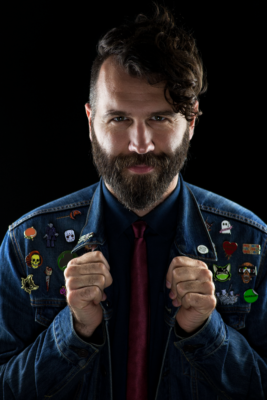 What films (queer or not) have made a significant impact on you and your work? In what way?
What films (queer or not) have made a significant impact on you and your work? In what way?
SW: Both holiday horror and the slasher film subgenres have influenced my work more than anything else. It’s probably no surprise that my favorite film, Black Christmas (1974), is a combination of both. The performances are legendary, the humor still has bite 40 years later, and the scares are SCARY. Black Christmas is a movie with strong social themes. We get a pregnant final girl and an eloquent argument for her choice to get an abortion – something I don’t think any studio would be brave enough to take on today.
Whenever I start preproduction on a film, I get together with the key crew to review film references and time and again, Black Christmas works its way into the lineup.
You recently joined the Attack of the Queerwolf! podcast team and Blumhouse seems like a really open-minded place to work (which might skew your response), but how progressive or welcoming is the filmmaking industry for queer creators right now?
SW: This is a tricky question to answer. There is a demand for explicitly queer content and studios are starting to respond to it. So in that way, it is an exciting time to be someone who has built his career on creating exactly that. The fight that we have ahead isn’t necessarily about the worthiness of our stories; it’s about proving that those stories offer financial gain.
Without a big hit to point to, though, it’s hard to get studios to overcome their own fears. The film industry as a whole is very progressive and they want us on the team; I’m just looking forward to getting off the bench and taking a swing at something big.
Do you think that your sexuality informs your films?
SW: Hell yeah. Being queer is the greatest gift I could have been given. My community encourages creativity, challenges me to be wittier, embraces authenticity, and provides unwavering support. What more could I ask for as an artist? When it comes to my work, whether it was a silly MySpace music video in 2007 or the segment for Deathcember that I just wrapped, my goal has always been to make the thing that I wish I had when I was growing up. My work is lovingly, unapologetically, intentionally queer.
Do you subscribe to queer readings of your films?
SW: I subscribe to queer readings of all films.
Have you interacted with many queer horror fans of your work? What has that experience been like?
SW:I have! It’s fucking awesome. When I was doing the festival run of The Quiet Room, I’d meet people who drove from all over to see it, which was a wild experience to have. There are some very personal themes in the movie (mental health and suicide), so sometimes people wanted to share their own experiences with me, which I was grateful to have the opportunity to hear.
And of course, [drag performers] Alaska and Katya have their own legions of fans – the drag community has been hugely supportive of the movie.
You’re a very busy man – in addition to Queerwolf, Fangoria’s Phil Nobile Jr has been hyping up The Quiet Room and you’ve mentioned your segment in Deathcember. What can you say about these (and any other) projects that you have in the pipeline?
SW: First off, I have to gush about Attack of the Queerwolf! You know when you’re listening to your favorite podcast and you imagine yourself in on the conversation? I was already a fan of the pod, so I was already friend-crushing over Nay and gobbling up their tea-time picks. Needless to say, being able to contribute to the conversation in a meaningful way is a dream.
Plus, I’m a Blumhouse baby, through and through. I interned for them when I was going to film school and it was where so much of my film fam began.
I’m sitting on a big announcement for The Quiet Room, so I’d say keep an eye out on social media for what’s next. Deathcember is next up: it’s out later this year and my segment, ‘Milk and Cookies’ stars Kue Lawrence (Beautiful Boy, Good Girls), AJ Bowen (Satanic Panic, You’re Next), Biqtch Puddin’ (winner of Dragula season 2), and Barkley Harper (The Quiet Room). It’s a nasty little stocking stuffer that I can’t wait for everyone to unwrap when the time comes.
Follow Sam on social media:
by Joe Lipsett
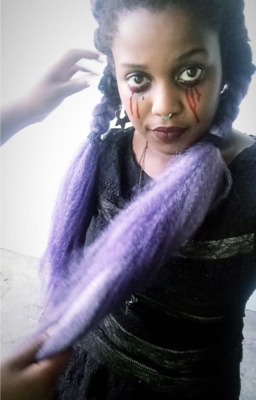 Name: Monika Estrella Negra
Name: Monika Estrella Negra
Age: 31
Birth Place: Houston,TX
Sexuality: Bisexual
Notable films: FLESH (2016), They Will Know You By Your Fruit (2017)
When did you know you were queer? When did you come out?
Monika Estrella Negra: I knew I was queer when I was young. I developed crushes on all of my girl friends – only to be rejected and bullied for it. I never felt that I was different, but I was definitely a tomboy.
Unfortunately, my coming out story isn’t glamourous. I was discovered making out with a girlfriend in a car and a family member saw me. They gave me the ultimatum of telling the family or they would do it for me. I refused and the truth came to light. I was kicked out of my home and was left to my own devices (I was around 18 when this happened). I was not prepared to deal with the world on my own, but I made it work. It was also my entry way into the punk universe, which ultimately changed my life for the better.
How did you get into filmmaking?
MEN: My mother bought me my first mini DV camcorder for good grades when I was 15. Growing up, I used film to escape some of the harsher realities of growing up post-crack epidemic within the inner city. While my child hood wasn’t the best, it wasn’t awful, but having to explore the world as a weird, Black, queer goth kid made me a recluse. Film (writing and reading) became my best friend. I had quite the obsession for filming in school and making little films with my X-Men action figures – out of sheer boredom, of course!
My great-aunt helped me develop a healthy taste for all things horror and science fiction: Twilight Zone, Dark Shadows, Terminator – she had excellent taste. This fed a desire to one day create my own narratives, ones that I didn’t see in the films that I consumed.
When I set out to create FLESH, I had no idea. I had been organizing a show called ‘Black and Brown Punk Show’ in Chicago for five years, had bounced around from house to house and city to city. I felt like I had to take an initiative towards other dreams I held close to my heart. I did attend college before I moved to Chicago, but it wasn’t for film. So I had to learn how to create a film for myself. Luckily, living in the technological age helped me piece it together slowly. All I used was desire for telling a story – particularly mine.
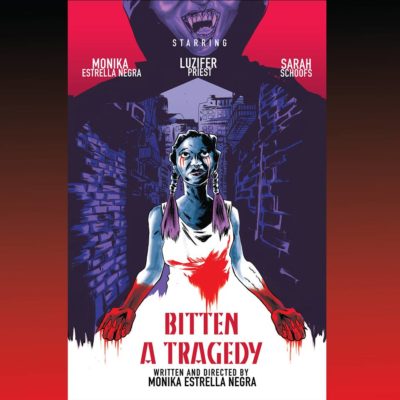
What is it about horror that attracts you?
MEN: To me, horror is the definitive genre that has no rules. That being said, it has also been a genre that has lacked any characters that I could personally identify with. There have been many films that have held the “no wave” torch [a rejection of commercial works], and I aspire to continue that tradition – by creating my own.
Also, horror is a good medium to discuss the depravity of white supremacy in this country, and how it can affect someone’s psyche in the worst way.
You’ve previously mentioned the films of Dario Argento, Attack The Block and Danny Boyle’s 28 Days Later as influential films. What other films (queer or not) have made a significant impact on you and your work? In what way?
MEN: Surprisingly, a lot of directors I love are not horror filmmakers (at least, they never identified aesthetically as such, but did touch upon horrifying topics at times).
Agnes Varda is one of my favorite filmmakers because she always had a penchant for telling the stories of the everyday person. Her use of her own political preferences with her stories also gave me the strength to create unapologetic narratives of my own. Julie Dash (Daughters of the Dust) gave me the inspiration to tell the stories of my ancestors and my own ethnic identity with beauty and grace. Maya Deren taught me how to make an audience *feel* the story by using a collage of sounds, visuals and off beat sequences. John Waters gave me the idea to be as absurd and filthy as possible. Marlon Riggs unveiled intersectionality to me (Ethnic Notions, Black is Black Ain’t) and reassured me that it is possible to explore sexuality and race in a single film. George A. Romero taught me that it is possible to infuse sociological critique and lots of gore without a hint of camp.
I don’t know – I have so many influences! It’s very hard for me to gush about only a few.
How progressive or welcoming is the industry for queer creators right now?
MEN: I think there is still significant stigma against Black queer creators at the moment. Specifically in regards to Black women – I think Dee Rees is still highly underrated. There is still an identity hierarchy that blocks people from getting the resources needed.
Yes, there are notable celebrities that are making strides (Janelle Monae, Lena Waithe). BUT I still have an issue with LGBTQA pride operating without critique of the capitalist hellscape that makes us invisible in popular culture, outside of the heteronormative idea of what is acceptable or respectability politics. In the queer world that I inhabit, we intend to burn down that world – and bring forth an identity that is free of traditionalist bullshit. That is why so many of us are still ripped off by corporations who attempt to appropriate our language, our fashions, our politics. It is far easier to sell an image versus promote the ideology behind the creation of the world. Queer liberation is in no way tied to any type of capitalist exploitation and that is a very dangerous investment for a lot to step into.
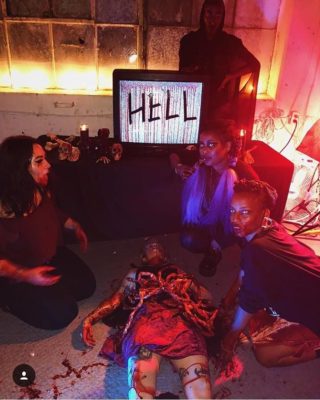 You’ve talked openly about how important it is for queer and trans people of colour to be represented in the horror genre (it’s part of the reason why you named your Collective Audre’s Revenge). Why it this still so important and how does it inform your storytelling process?
You’ve talked openly about how important it is for queer and trans people of colour to be represented in the horror genre (it’s part of the reason why you named your Collective Audre’s Revenge). Why it this still so important and how does it inform your storytelling process?
MEN: It’s not so much about representation anymore since more corporations are finding a way to profit off of LGBTQA communities. My focus is on who controls the narrative, and who is getting the work. It’s so easy to hire a queer or trans person of color to star in a film, but who wrote it? How many of the crew are from the same community?
I am against any type of voyeurism when it comes to story telling because it is a reflection of the many privileges in society. I know so many talented make-up artists, dancers, screen writers, and musicians who are literally working for minimum wage in a field that is not reflective of their talent. What does it say about an arts world where only the super rich, (majority) white, cisgender, heterosexual people have nepotism within the industry? It leaves a bunch of culture-starved vultures who prey on those who have real stories to tell.
If people want to get the real grit, the true value of the stories being brought to life – HIRE PEOPLE WHO LIVE THAT LIFE. It’s really that simple. Also, especially within horror, I think it is high time for queer and trans people to carry stories that are reflective of our own innate horrors. I am not sure if mainstream audiences would be able to handle it, however, considering how the state of this country results in a lot of the horrors that we face. People don’t like to face the truth. I think Audre would agree with me.
Do you subscribe to queer readings of your films?
MEN: I try not to subscribe to what anyone thinks about my films. If it’s what came from my heart, then it is what it is. Everyone else can think whatever they want.
Have you interacted with many queer horror fans of your work? What has that experience been like?
MEN: The majority of my fans are part of the queer community that I inhabit. Some of them I met while I was organizing in Chicago and some are just rad people that I have met through my many travels. I have been very blessed to have found a dream circle!
I admittedly did not know that there were as many queer kids that love horror as much as I do. For a lot of us, we found comfort in a world that was horrifying in fiction, while so many of us experienced hellish experiences in our life.
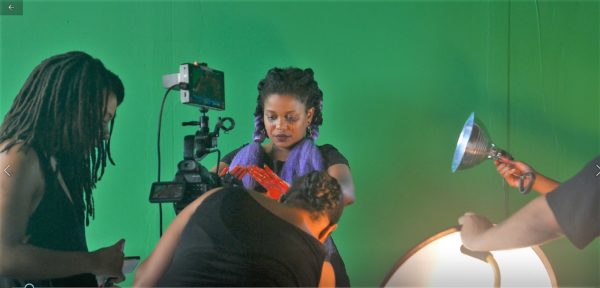
You’ve successfully fundraised for several shorts, including Flesh, They Will Know You By Your Fruit and now Bitten, a Tragedy. Can you provide a status update on Bitten and talk about what’s next for you?
MEN: Bitten, a Tragedy resumes filming this summer and then it’s a wrap! I am hoping to have it out into the world by Halloween, or maybe sooner. I am sincerely excited to finish filming and sharing this story that I have had in my head for almost two years.
Once it is finished I plan on writing more stories and obtaining resources for a studio where myself and other budding filmmakers can create. The future is definitely uncertain, but I am confident that creating more narratives is definitely in store.
Follow Monika on social media:
by Joe Lipsett
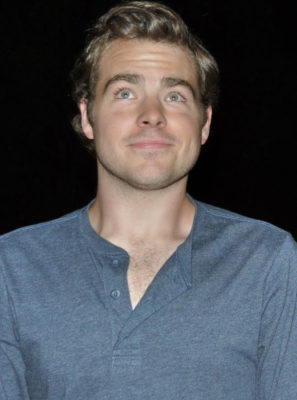 Name: Chris Moore
Name: Chris Moore
Age: 29
Birth Place: Jackson, MS
Sexuality: Gay
Notable films: Blessed Are the Children (2016), Triggered (2017), A Stranger Among the Living
When did you know you were queer? When did you come out?
Chris Moore: I came out in college to my close friends first. Thankfully, it was an art school, so being gay wasn’t much of an issue at all. Hell, it was probably encouraged.
I’d known I was gay since I was about 10 years old. I had an awakening when I saw, of all things, The Rage: Carrie 2 and fell madly in love with some of the guys in that. Looking back, there were signs before that. I remember noticing an older student on the playground when I was about 6 and just thinking that I needed to go hang out with him because he had beautiful eyes.
I was worried about everything living in the Bible Belt, so I kept it to myself for years and years. It wasn’t until after college that I started coming out to my family who were pretty supportive. I was a late bloomer, though. I didn’t even have a first kiss or sexual encounter until I was 24 or 25 which, in gay years, is about 52.
How did you get into filmmaking?
CM: I started when I was about 10 by using my family’s VHS-C camcorder and making a Scream fan film called Killer. I’d get my school friends to come over and we’d take turns playing Ghostface and Victim. My Mom would operate the camera and the boom box off to the side, so that we could have music in the scene, as well.
This was well before the days of easy and affordable digital home editing, so you had to use whatever you could. It was a mess, but that’s how the filmmaking bug bit me and I haven’t stopped since.
Why do you make horror films?
CM: Oh, boy! That’s a tough one. I think I make them to exorcise demons and confront my fears. I talk about things that scare me like bigotry, religious fanatics, depression, hate, losing one’s mind, etc. It’s an easier way to confront tough issues without making it feel heavy handed or too dour. If someone were to make a heavy drama about a single mother’s depression, not many people would be that interested because it sounds like a bit of a drag. Dress that depression up as a monster, however, and you have The Babadook.
Plus, horror films are an exercise in pure empathy (if you do them right). We’re forced into the shoes of someone who’s having the single worst day of their life!
I was a huge scaredy cat until I was about 6 or so. If you even walked me into the horror section of a video store or a really elaborate haunted house around Halloween, I’d freak out. I remember having the worst nightmares, too – worse than anything I’ve ever seen in a horror film. It wasn’t until my Dad showed me the original House of Wax with Vincent Price that I kinda sobered up and realized that horror could be a fun way to confront your fears.
Around that same time, my family went on vacation to Universal Studios and there was a Hitchcock attraction where they showed you how some of his biggest set pieces were achieved, including the shower scene from Psycho. Well, I thought this was the coolest thing ever and, the moment we got back, I just had to see Psycho in full. My Grammie had a copy and showed it to me and a love affair began. Pretty soon, I was trying to see any horror film I could and my nightmares disappeared.
These days, I’m much more frightened of reality than I am of any horror film or nightmare.
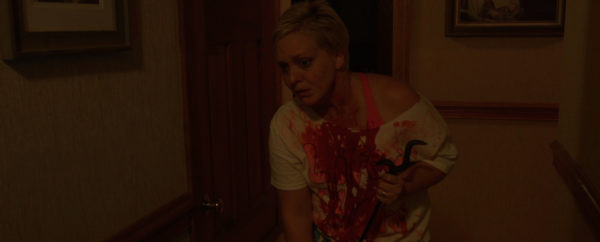
Blessed Are The Children
Your films are packed to the gills with homages to famous horror films so you obviously wear your influences on your sleeve. What films (queer or not) have made a significant impact on you and your work? In what way?
CM: Psycho is probably the most significant one, but Halloween had a huge impact in my early years. Carrie and A Nightmare on Elm Street were big ones as well. I think those are simply perfect films.
I’m drawn to all sorts of films, but I’d say stuff like Dressed To Kill, He Knows You’re Alone, Carnival of Souls, House on Haunted Hill, Scream, Suspiria, Deep Red, Martyrs, The Redeemer, Black Christmas, Inside, Alice Sweet Alice, The Sentinel, The Stepford Wives, Rosemary’s Baby, Creepshow, Poltergeist, Night of the Creeps, Prom Night, Let’s Scare Jessica To Death, Hell Night, Killer Party, Silent Scream, American Gothic, Night School, Butcher Baker Nightmare Maker, etc.
I don’t even know that I could explain why these films have stuck with me and inspired me, but they have. I love some of them because they’re legitimately scary and I love others because they’re just off the wall and fun. I like a nice mix. As long as they make me feel something, I’m happy.
How progressive or welcoming is the industry for queer creators right now?
CM: I’ve been fortunate not to have experienced much negativity due to my sexuality. Most of the critiques that I’ve gotten have been thoughtful and helpful and haven’t mentioned anything negative about the gay themes that might be baked into my work. Every now and then, you’ll get some looney who tries to poke fun at your work because of that stuff or because the film isn’t what they had expected (there’s always that one guy who laments the lack of topless actresses in my films), but the majority have been very open minded and lovely.
Then again, I’m doing this on a fairly small scale and most people don’t have any idea who the Hell I am, so that might help. If I were trying to get big studio movies made, I might be singing a different tune, but the indie world is a bit more freeing.
Both of your last few films have explicitly “out” characters (Mandy in Blessed are the Children and Ian in Triggered). Why is it important for you to have lead queer characters in your work?
CM: Visibility is so important. And various representations of LGBTQ characters are even better. For years, when you’d see a character like that on screen, they’d simply be the effeminate comic relief or the intense butch lesbian or the scary serial killer trans person.
I feel like people need a bigger variety of LGBTQ characters on screen these days. As a gay person myself, I crave stuff like that. Have you ever looked in the LGBTQ section of a video store or Amazon/Netflix? A lot of those movies aren’t very good. They’re telling the same dull coming out stories over and over again or the usual “I’ve fallen in love with a married ‘straight’ man” sagas. I think it’s time to put LGBTQ characters into different kinds of stories and roles because we’re more than our sexuality or gender expression.
I’ve always felt that one of the best LGBTQ characters of all time was in John Carpenter’s Someone’s Watching Me. Adrienne Barbeau plays a lesbian and it’s mentioned once or twice and then never brought up again. She’s allowed to exist as more than just a diversity quotient in the film. She feels like a real person and not a cliché. And this was a TV movie in the 70’s. I’m sure there are people in the community who want us to be loud and proud and not be portrayed as “normal,” but I like it when a character’s sexuality or gender is just a trait and it doesn’t really make a big difference in the story. It puts everyone on a more even playing field.
Do you subscribe to queer readings of your films?
CM: I support them 100%. I think it’s fabulous. I wonder if my films are even gayer than I had initially intended. They’re already pretty gay.
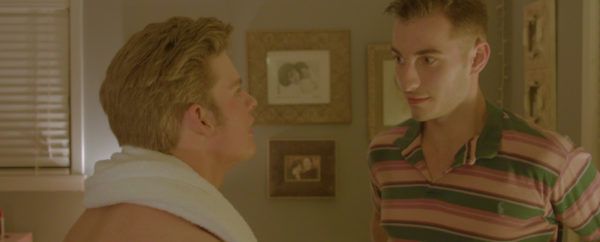
Triggered
You’ve spent a lot of time touring the festival circuit with your last two films. Have you had a chance to interact with many queer horror fans? What has that experience been like?
CM: I have and I have to say that they are some of the kindest, most passionate, and funniest human beings on this earth. I really don’t think there’s anything better than a queer horror fan. I feel like a lot of regular “bro” horror fans are just like “where are the tits? Where’s the blood? This ain’t no horror movie without those” whereas the queer horror fans are always more thoughtful and interested in story and characters. They love their gore and nudity, too, but they know that there’s more to horror film than just that.
I think that’s why so many of us worship at the altars of Heather Langenkamp, Jamie Lee Curtis, Amy Steel, Adrienne King, and Barbara Crampton, etc. They played these great characters who represent strength and survival and a lot of us have looked to them for inspiration over the years. I think that’s why, as a whole, queer horror fans tend to be more loving and accepting. We’ve had to fight to survive just like our favorite Final Girls.
I know you’re touring the circuit right now with your latest feature, Triggered and you’re currently in production on your next film. What more can you tell us?
CM: I’m super excited about it. It’s called A Stranger Among the Living and it’s close in tone to films like Let’s Scare Jessica To Death and Carnival of Souls. It’s a pretty big departure for me as both Blessed and Triggered had slasher elements and this one is much more of a creepy, dreamlike mood piece. It’s about a teacher who avoids a school shooting and starts being haunted by all sorts of creepy stuff. And yes, there’s a gay character (two actually!) We’re headed into post-production with that right now, so hopefully it’ll get around to some festivals by later this year or early next.
Follow Chris’ films on twitter:
by Joe Lipsett
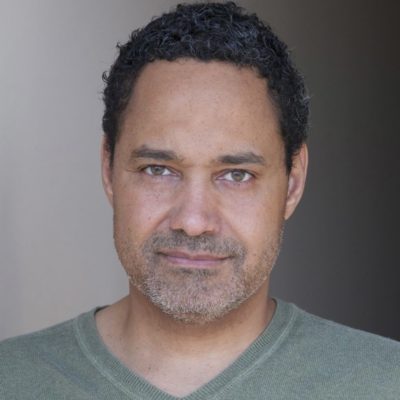 Name: Jeffrey Reddick
Name: Jeffrey Reddick
Age: (Bitch…who asks that? 🙂 49)
Birth Place: Florida, but I grew up in Kentucky and claim that as home
Sexuality: Gay
Notable films: Final Destination (2000), Tamara (2005), Day of the Dead (2008), Dead Awake (2016), The Final Wish (2018) and (soon) Good Samaritan
When did you know you were queer? When did you come out?
Jeffrey Reddick: I’ve known from as far back as I can remember. I didn’t know what to call it, but when I hit puberty, I realized that the feelings other men described about women was what I felt for men. It was interesting, because being bi-racial was also a big deal at the time. So I faced a lot of outward prejudice based on my race. My mom always went out of her way to tell me to love myself and not worry about what other people thought about me being “different.” That helped me deal with all of the homophobic stuff I heard growing up.
I came out to my best friend when I was 13. He said it was just phase, but was cool with it, so that was good. Other kids kind of assumed, but…and this is awful to say…they were so focused on my race that they bullied me for that rather than for being gay. And no girls’ parents would let them date me in high school, so I didn’t have to worry about the stress of pretending to like girls.
When I went to college and majored in theatre, it was a whole other world. It was very accepting. I was out in college and even started an LGBTQ group on campus.
I finally decided to come out to my mom in college. I think that’s one of the biggest burdens we carry if we’re not out to our families. No matter where we go in the world, there’s always the nagging feeling that if our families find out, they’ll stop loving us or disown us. Sadly, that still happens. My mom was an amazing mother, but she was also an older Southern woman and Southern people are really concerned about “what the neighbors think.” She wound up reacting in a typical fashion: she cried for a few days non-stop, but then her best friend literally told her to shut up and said ”he’s still the same son you raised.”
Once my mom realized it wasn’t a big deal to her best friend, I think it gave her permission to accept me. Again, this was in the late 80’s, so it was a much different time.
You’ve had an amazing and diverse career as a horror writer of both film and TV. What prompted the recent shift into directing and how did it come about?
JR: It was never my dream. I wanted to act in the early 90’s, but unless you could rap or wanted to play a thug or a pimp they didn’t know what to do with you (if you had dark skin). That’s why I transitioned to writing.
Directing was something I really became interested in, but, honestly, fear held me back for a long time. I have a few passion projects that I want to direct, but they’re big(ger) budget films. Most of my later scripts went the indie film route, which meant that I got to spend a lot of time on set and get comfortable.
With [feature directorial debut] Good Samaritan, it was a story that I wanted to tell and since we were doing it indie, and could get investors who were open to me directing, the opportunity was there, so I took it.
What is it about horror that attracts you?
JR: When I was younger it was definitely the “naughty” factor. My friends and I would watch the goriest films possible as an act of rebellion. After seeing the original Nightmare on Elm, I realized how amazing the genre could be and started reading Fangoria and became obsessed with it.
As a gay man, I do have a subconscious connection with the Final Girls of the 80’s. They were always good girls who didn’t fit in with the popular clique that was partying and have sex all the time. They were outsiders and they rose to be the victors, and that element really struck me. I love so many Final Girls and I think that also dovetails with a lot of gay men who love strong women. When I was growing up, Nancy Thompson was the ultimate to me. And Laurie Strode. And Amy Steel (the list is endless!)
I also started realizing how fun it was to scare people. Hearing people scream during a film you wrote is the ultimate thrill. It’s a genre that I’ve stubbornly stuck with and will probably do so for the rest of my career. I just find that you can tell so many types of stories and deal with topics in ways that you can’t in other genres. It’s just a world I love.
What films (queer or not) have made a significant impact on you and your work? In what way?
JR: A Nightmare On Elm Street is definitely the biggest influence. The complex heroine. The original, and terrifying, villain. The theme of the sins of the past haunting us resonates with me. I also love how Freddy would find people’s weaknesses and prey on them. That’s a theme in a lot of my films.
I also love all the standard classics like Halloween, Friday the 13th and films like that. Evil Dead scared the hell out me. And I love the beauty of films like Suspiria and the artistry and themes of Candyman. They all appeal to different aspects of me. When I write a slasher film, I try to think of kills that I haven’t seen before, but I love supernatural horror where you can bend the rules and mess with people’s head. I did realize with Good Samaritan that I’m more old school in my filming style; I don’t care for the hyper-edited, over-saturated look of films. I like movies that feel more grounded and real.
Topping the list of non-horror films that really impacted me was Maurice. It’s the first gay Merchant Ivory film. I stole money from my mom (bad me) and ordered it from The Oscar Wilde bookstore in New York. I watched that movie on a loop until the VHS tape wore out in my little trailer in Kentucky. Even though it’s a period piece, the story still resonates with many of the struggles that our community faces today. It deals with forbidden young love, religion, and conversion therapy, but it wasn’t a tragedy. It also spoiled men for me! I decided at 13 that one day I would marry a proper English chap. I still haven’t even visited London! (I need to get on that)
You’ve worked on so many diverse projects in different capacities. How progressive or welcoming is the industry (TV and film) for queer creators right now?
JR: It’s very welcoming. Hollywood is not free of homophobia by any means, but people forget that Hollywood isn’t a world unto itself. A lot of people here are artists who left their hometowns in the South and Midwest to follow their dreams and sometimes people bring their prejudices with them. Most people who vehemently dislike gay people have never actually met one, but there are plenty of gay people in Hollywood, so people change when they come here. It’s not magic in the air. It’s actually meeting normal people who happen to be gay and realizing that we’re regular people; we don’t have some nefarious agenda. We just want to live their lives.
The biggest problem isn’t with the behind the scenes stuff. It’s that Hollywood is very risk-averse, so they create content that will appeal to the vast majority of America and worry that “Middle America” isn’t ready for some stuff. That’s why it is much tougher being an out actor in Hollywood. Even if the studio heads don’t say publicly, they’re still averse to casting gay actors in traditional “straight” roles. I’ve seen it happen so much. And, of course, there are still actors who will sign on to a project and then not want to kiss a guy. I’ve seen several gay characters who were “de-gayed” for actors. Or gay content that watered down – Tamara being one example – to the point that it undermined what I was trying to say. So Hollywood is welcoming, but because making movies is such a risk, some people still want to play is safe when it comes to big studios films.
On the bright side, TV is thriving with its representation of LGBTQ characters. It’s astounding and really has given gay youth growing up today the kind of complex role models that I never had growing up. I always think it’s important for people to realize how fortunate we are to be living in the times we live in. Yes, we have forces trying to deny us our rights, but when I was growing up, there weren’t really any out gay actors to relate to. Living in Kentucky, I would find out an actor was gay after they died of AIDS. So it was sad and tragic and even when you tried to find some kinship with people like Rock Hudson, you realized they lived their lives in hiding. But then you would discover people like Clive Barker, who’s a brilliant talent, who was gay and open and you’d find these little rays of hope and inspiration.
But I think TV is really where the biggest and most impactful change has happened. We’ve gotta give Shonda Rhimes a huge shout-out for that. There are also a lot of gay celebrities who have done so much for the community: Ellen. Rosie. Neil Patrick Harris (just to name a few). They were all trailblazers. And Greg Berlanti has done such an amazing job of including gay and trans characters in so many of his shows. I think we’re really in the Golden Age of TV.
Do you believe that your sexuality informs your work?
JR: It can’t help but influence it. I think each of us has a distinct perspective and world view. You can give five writers the same concept and their stories will undoubtedly be different because they’re writing from a different place because of their experiences. I think the biggest way my sexuality influences me is that I understand the outsider who’s just trying to make a difference in the world (even if that difference is just to entertain someone for a few hours). Therefore my horror writing is more about fun scares and kills – not torture (although I do watch those films, as well).
For my scripts, I’ve always made sure to write strong women. They can be extremely sexy…but I don’t sexualize or fetishize them in the way that a straight writer might. And, of course, Final Destination had a “Final Boy” in Alex because I wanted to subvert the genre a little.
I’m also mindful to include gay characters in my work whenever possible…even though a lot of them have been changed. My friend Paul Etheredge wrote a gay slasher film called Hellbent about 20 years ago. I don’t think the world was ready for it, but it is now. Even though there wasn’t room for it in Good Samaritan, I do plan to be more involved going forward when my scripts are adapted. For me personally, I try to write gay characters where it’s not their defining characteristic. We are all so much more than our sexuality, even though society often tries to boil us down and act like that’s all we are.
Have you interacted with many queer horror fans of your work? What has that experience been like?
JR: A ton. There is such a large LGBTQ horror fanbase out there and it’s really a shame that no one has tapped into it. I meet so many fans and most of them are just excited to know that an out gay man created a franchise they love. I’ve gotten a lot of love for Tamara as well, even though the lesbian lead had that stripped from her and the “gay scene” in the film isn’t how I wrote it. But queer fans really relate to the story of an outsider who gets empowered and takes revenge her tormentors. It’s so much fun going to conventions and seeing younger people inspired to write/act/direct horror. Or couples who met on a Final Destination date and are still together. LGBTQ fans have this idea that the horror community isn’t accepting of gay people, but honestly I’ve found them to be the most welcoming group.
I love interacting with fans. In films, writers don’t get much attention, it’s all about the actors and directors. But horror fans are the greatest, most passionate and loyal fans. They’ve supported me through some great films (and some not so great ones) and they get excited about everyone – from cast to crew – involved in the horror films they love.
I’ve had some fans who say I inspired them to come out and that’s the most rewarding thing. Well, the most truly touching and rewarding thing is I’ve met a few fans who were closeted and depressed and said they contemplated suicide until they read an article or heard a podcast where I talked about being gay. It’s less about me; it’s about the importance of visibility. Let people know that you can be who you are, live your life without shame and go after your dreams. That’s why I have so much admiration for the people who have come before me.
So you’ve literally just announced your directorial debut, Good Samaritan. What can you tell me about the film? How is the transition to the director’s chair?
JR: I can tell you that it’s about a group of people who witness a man getting beaten and don’t help. When they start being killed off, our lead, Caitlin Kramer, is convinced that it’s a supernatural killer, but the police and everyone else thinks it’s a person making them pay for their crimes.
I hate to say this because I hate when other people make a horror film and then try to say it’s a supernatural thriller (as though horror is a dirty word)…but this movie is a supernatural mystery. Because the film plays with that uncertainty about whether there is a force after these people or if it is just a person, I couldn’t dig in to my bag of supernatural horror tricks or my slasher tricks. As a result, the kills aren’t shown, but the bloody aftermath is.
It was a great experience. It’s my first film, so even though I’ve been on a ton of movie sets, you really don’t know what you don’t know until you actually make a movie. It really is a miracle to get a film made and you have to be creative and flexible while shooting. We’re in post now, which is where the movie comes to life, so it’s really exciting. Directing is something that I definitely want to do again.
Follow Jeffrey on social media: